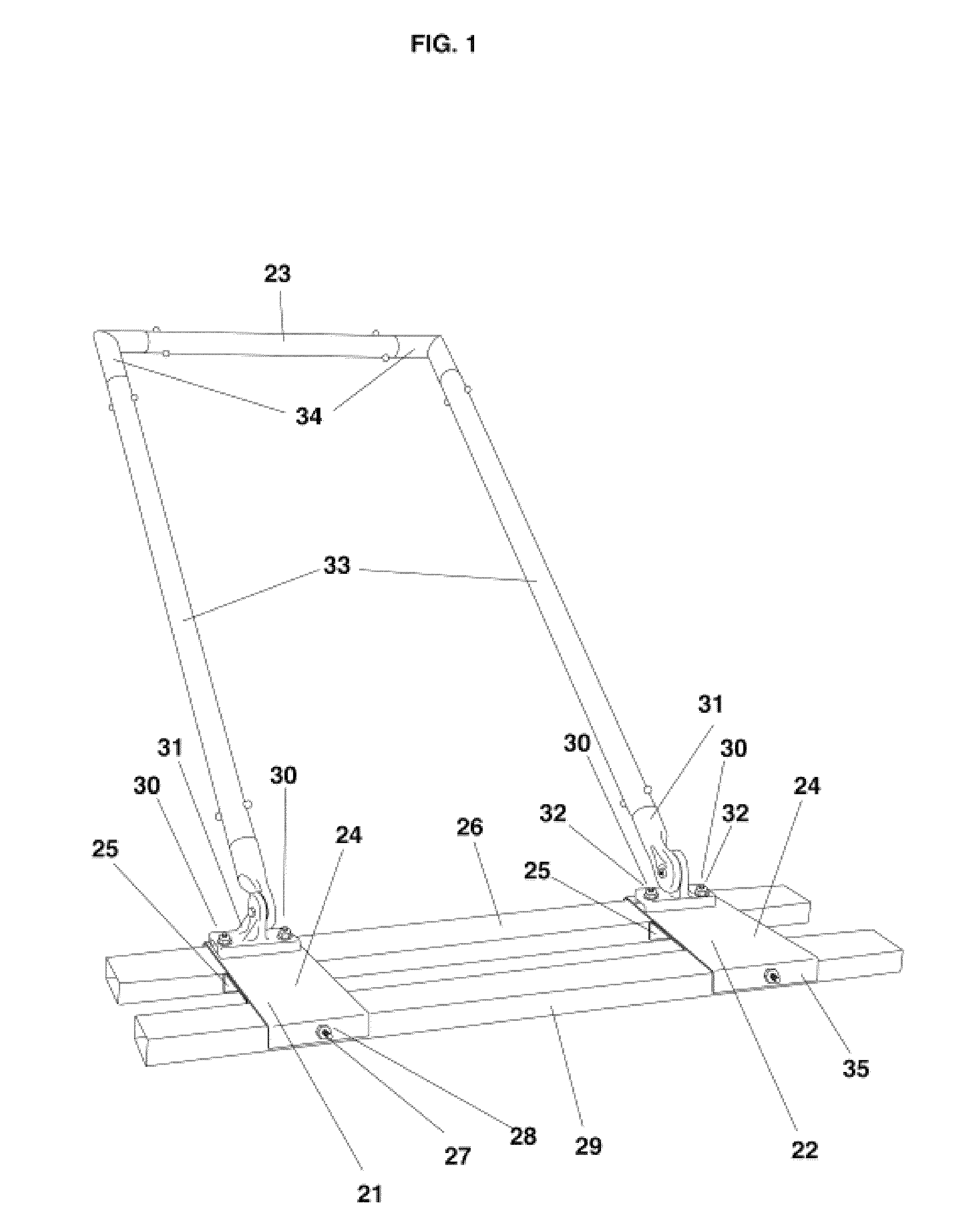Ergonomic non-motorized vibratory concrete screed
a non-motorized, vibratory technology, applied in the field of concrete work, can solve the problems of common back and or arm strain or injury, vibratory screeds, and productivity decline, and achieve the effect of convenient interchangeability
- Summary
- Abstract
- Description
- Claims
- Application Information
AI Technical Summary
Benefits of technology
Problems solved by technology
Method used
Image
Examples
Embodiment Construction
[0040]One presently preferred embodiment of the invention is illustrated in FIG. 1. The powerful effects of this simple screed originate in the floating screed plate assembly which is comprised of two screed bars linked by a bracket system. There is a right 21, and a left 22, bracket assembly. These brackets are designed for the attachment of the handle 33, for the operator and attachments of the floating screed plate assembly that contacts the concrete. Each bracket assembly comprises two separate metal components: an inverted U-shaped upper bracket 24, and an inverted U-shaped lower bracket 25. The right and left upper brackets 24, are 8″×13″ and made of light-gauge metal. The right and left lower brackets, 25, are 8″×5″ with both front and rear downward L-bends of 90°, hereafter, “flanges” being 8″×1⅜″ on surface. When assembled, this bracket assembly provides two spaces: one space for the leading and one space for the following planar-oriented 2″×4″ strike bars of the floating s...
PUM
 Login to View More
Login to View More Abstract
Description
Claims
Application Information
 Login to View More
Login to View More - R&D
- Intellectual Property
- Life Sciences
- Materials
- Tech Scout
- Unparalleled Data Quality
- Higher Quality Content
- 60% Fewer Hallucinations
Browse by: Latest US Patents, China's latest patents, Technical Efficacy Thesaurus, Application Domain, Technology Topic, Popular Technical Reports.
© 2025 PatSnap. All rights reserved.Legal|Privacy policy|Modern Slavery Act Transparency Statement|Sitemap|About US| Contact US: help@patsnap.com



